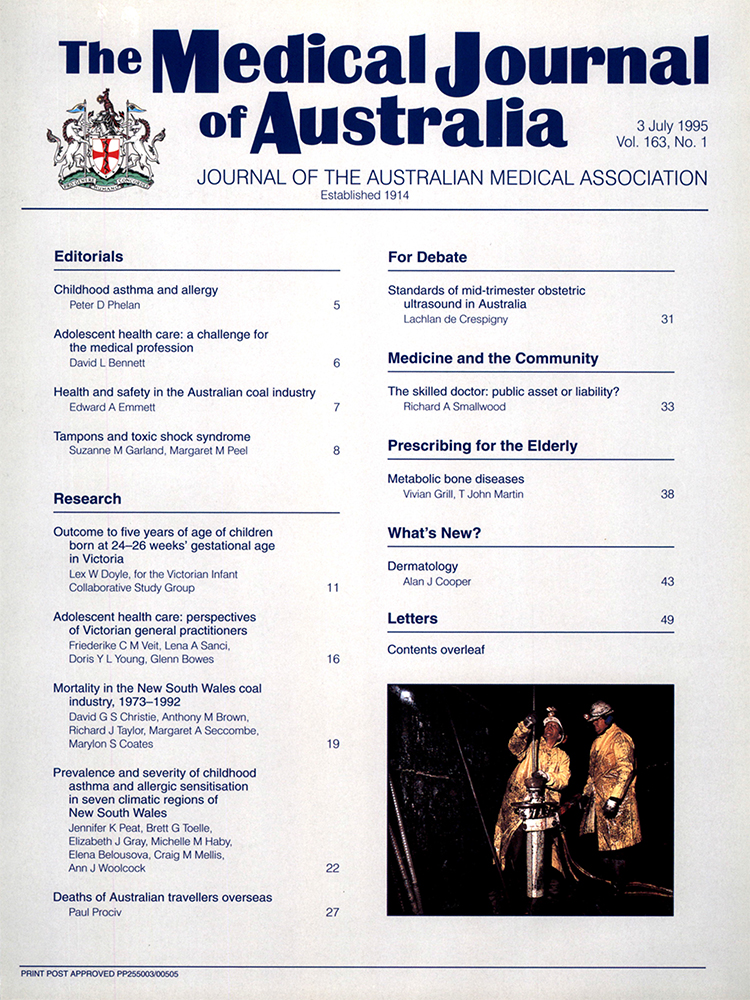Prevalence and severity of childhood asthma and allergic sensitisation in seven climatic regions of New South Wales
Abstract
Objective
To compare the prevalence and severity of asthma and of allergic sensitisation in children in different regions. We hypothesised that regions with different standardised hospital admission rates would have different prevalences of childhood asthma and that diverse climates would result in a range of sensitisations to different allergens.
Design and setting
We studied large random population samples of children in seven regions in ew South Wales (SW) in 1991-1993. Hospitalisation rates were obtained from NSW Department of Health data.
Participants
6394 children aged 8-11 years.
Outcome measures
History of respiratory symptoms by selfadministered questionnaire; airway hyperresponsiveness by histamine inhalation test; and sensitisation to allergens by skin-prick tests.
Results
Children in all regions had a high prevalence of recent wheeze (22%- 27%), of diagnosed asthma (240/0-38%) and of use of asthma medications (220/0-30%), but no region was consistently higher or lower for all measurements. The prevalence of current asthma in children living in three coastal regions (where sensitisation to house-dust mites was high) and in the far west (where sensitisation to alternaria was high) was 12%-13%, which was significantly higher than the prevalence of7o/o-lO% in children living in three inland regions (wher e sensitisation to these allergens was lower) (P < 0.01).
Conclusions
We found significant variations in the prevalence and severity of childhood asthma in NSW. The prevalence ofhospitalisations, diagnosed asthma, recent symptoms and medication use may relate to different regional diagnostic patterns, whereas current asthma prevalence may relate to different levels of allergic sensitisation.




